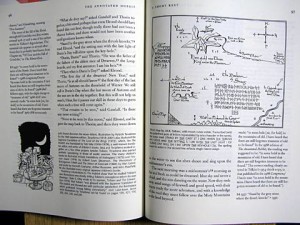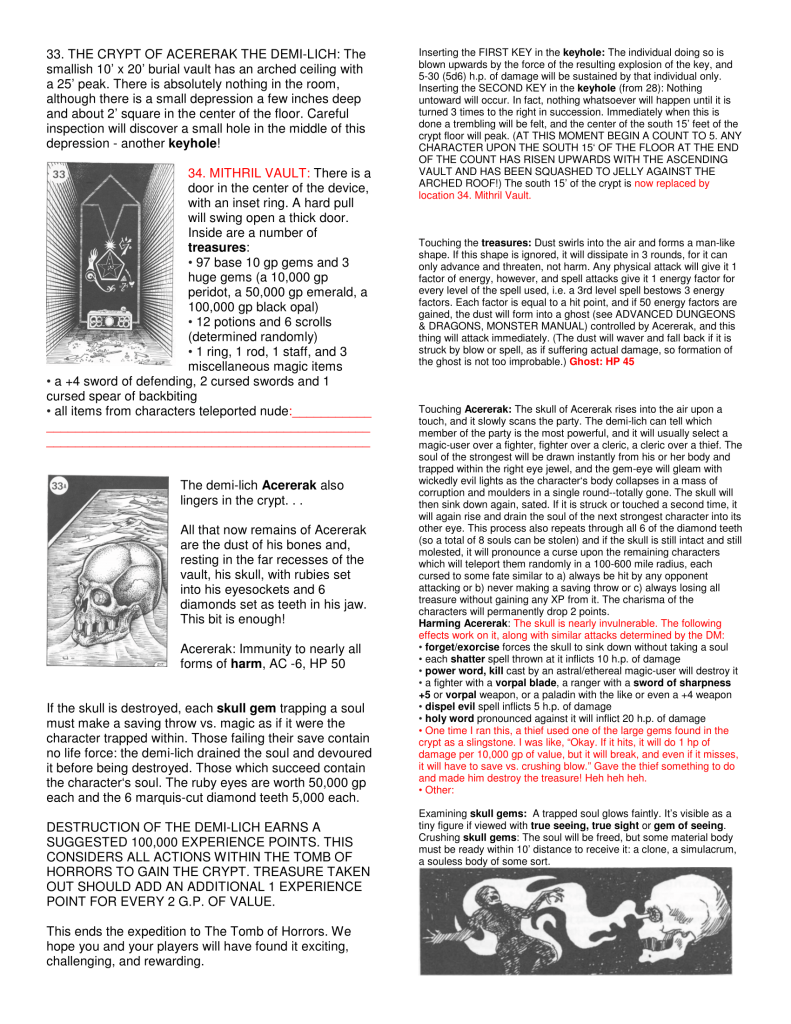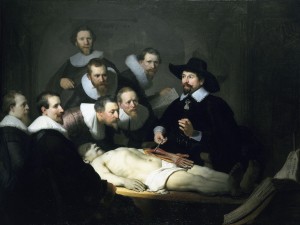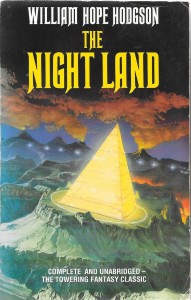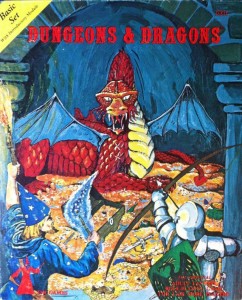In my game world, hobgoblins and bugbears are not a separate subspecies, but goblins who have been “promoted.” A goblin tribe has the power to elevate its members to hobgoblinhood or bugbeardom. Let me talk about how that ability, plus elements drawn from game theory, might naturally produce goblin-only tribes; goblin tribes ruled by hobgoblins; bugbear gangs; and a few powerful hobgoblin empires – in other words, enemies that can challenge PCs at different levels. In fact, the same goblin tribe might rise with the PCs from level 1 to name level, remaining a stubborn threat throughout.
Ok, so the rule is, any dozen goblins can cast a ritual that turns a thirteenth goblin into a different goblinoid (hobgoblin or bugbear). Any one of the dozen goblins can sabotage the ritual without revealing its identity. Only goblins have this power, not the other goblinoids.
Now every goblin tribe is in a prisoner’s dilemma.
Let’s take a tribe of all goblins. Each would like the power of a bugbear or hobgoblin, but no one wants to give rulership to another. Even a goblin chief has trouble finding a dozen goblins loyal enough to elevate it: at least one (but probably all) of any dozen will secretly ruin the ritual.
Of course, all the goblins would benefit if they just agreed to promote each other to hobgoblins or bugbears (except the unlucky last 12 goblins who don’t have enough compatriots to cast the ritual on them). But a goblin would benefit even MORE if it was promoted and others weren’t.
Thus, a tribe of goblins are in a Nash equilibrium (part of an economic game-theory model proposed by John Nash, the Beautiful Mind guy). No goblin wants to change the status quo for the better, because whoever makes the first move (by promoting someone else) is likely to benefit the least.
This goblin mutual distrust means that players will encounter lots of goblin-only tribes, suitable for first-level characters to beat up on.
However, when things get tough for the goblins, this changes.
For short-term threats, like an owlbear wandering nearby, goblins might convert a few of their number into bugbears. Bugbears are tough and sneaky, but unlike goblins, they’re not community- and lair-minded. At first, they might accept tribute in exchange for fighting the tribes’ enemies; but they’ll soon get bored of bullying their weak cousins and wander off to form their own bugbear clique – perhaps even hunting goblins of their original tribe – or to seek their fortunes as minions of mad wizards. That’s why bugbears are fairly rare as part of goblin tribes, but are often found as wandering wilderness monsters or level 2 dungeon encounters.
For long-term threats to a goblin tribe, raising a hobgoblin to rule the tribe looks pretty good compared to being enslaved by orcs or slaughtered by humans. So when goblins are under serious attack, a hobgoblin chief arises.
A tribe with a single hobgoblin is not stable. Hobgoblins are teamwork-oriented, so the first hobgoblin will probably demand a second hobgoblin, and so on. However, hobgoblins like to have someone to bully, so they’re likely to stop once they’ve gotten a nice little hobgoblin war band surrounded by goblin slaves: a feudal system, essentially.
The equilibrium of this configuration means that there are lots of goblin tribes with elite hobgoblin nobles, especially in areas where the PCs have been slaughtering goblins. So on day 2 of the Caves of Chaos, when the PCs return to finish clearing the goblin lair, they’ll find that their opposition just got stronger and more disciplined.
This dynamic is stable until the tribe begins to meet with success. Once the hobgoblins have lots of non-goblin slaves, they look at their goblin minions, not as servants, but as potential comrades in arms. They’ll expand their army by converting all their goblins to hobgoblins, except for the smattering of goblins needed to cast the ritual and a few bugbears to act as scouts.
That’s where you get your classic Roman-style hobgoblin armies with dreams of conquest – a good match for mid-level characters. PCs returning to the Caves of Chaos on day 3 may find that all the surviving goblins are now hobgoblins, and the kobolds and orcs are now their footsoldiers.
Of course, this “leveling up” of the goblin tribe relies on the PCs never doing the logical thing and slaughtering the whole tribe. But game theory suggests a plausible solution there too. The Nash equilibrium inspired the military doctrine of mutually assured destruction.
Let’s say that there’s a fourth type of goblinoid, whispered about in human villages, feared even by goblins, but rarely encountered: a mindless Tasmanian devil of wanton destruction which kills everyone it encounters, including the goblin tribe to which it once belonged. It can be created through the same ritual that promotes goblins to any other goblinoid.
In tribute to the Nash equilibrium which inspired it, let’s say the goblins call this monster “the Gnasher.” For stats, I suggest using a flesh golem. There are three reasons for this: 1) with its high HP and immunity to nonmagic weapons, a flesh golem is capable of slaughtering goblins and low-level PCs indiscriminately; 2) it’s got a rampage mechanic which describes how I want the creature to act all the time; and 3) it’s alphabetically close to goblin, so you only have to flip a few pages to keep track of monster stats for your apocalyptic goblin battle.
Goblins are not suicidal. They know that if they cast a ritual to create a Gnasher, they’re likely to be its first victims. But goblins are also vindictive. If they’re cornered in their lair by PCs bent on slaughter, the last 13 goblins will join hands and chant, and then, next round, one of those goblins will turn into something the PCs might not be able to handle.
As a side effect of this, here’s another encounter the PCs might stumble into. While exploring a forest or in a cave system, the PCs find some moldering goblin corpses, and then, further on, among goblin huts and fortifications, a reeking slaughter, like a goblin battle with no survivors. Right here, the PCs should probably decide to go back the way they came. If they continue, they’ll see a lone creature, like a big, blood-stained, grotesquely muscular, misshapen goblin, walking in circles and yammering and growling to itself. And then the monster will see the PCs, and charge.

